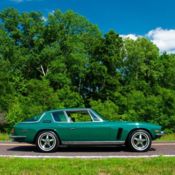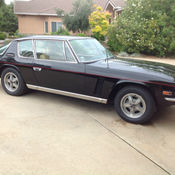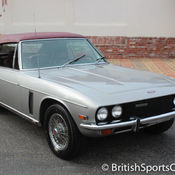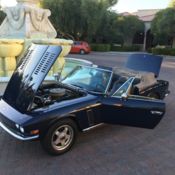1974 Jensen Interceptor MK III 7.2L
| Make: | Other Makes |
| Model: | Interceptor |
| Type: | U/K |
| Trim: | MK III |
| Year: | 1974 |
| Mileage: | 48,926 |
| VIN: | 2210 9895 |
| Color: | Black |
| Fuel: | Gasoline |
| Transmission: | Automatic |
| Drive type: | U/K |
| Interior color: | Tan |
| Vehicle Title: | Clear |
| Item location: | Manchester, New Hampshire, United States |
| Extras |
|
Air Conditioning, Power Locks, Power Windows Cassette Player, Leather Seats |
| Listed by | Private seller |
Description of 1974 Other Makes Interceptor |
| Car History: Bought by the original owners in England with the knowledge they would be moving to the United States in a year or so they special ordered The Jensen Interceptor MK III in left side drive. Already a vary rare car this only make it that much more rare. The Original owners moved to New Hampshire where the car was stored in a climate controlled Garage when not enjoying the 440 Cubic Inches of Chrysler power . All original parts/paint and matching numbers make this a one of a kind car for the serious buyer. Watch this video of a different 1974 Jensen MK III and see the styling and what makes it a one in a million car youtube. com/watch?v=P8Qx7-qN62QManufacturing History :The Jensen Interceptor is a sporting GT-class car that was hand-built at the Kelvin Way Factory. West Bromwich near Birmingham in the United Kingdom by Jensen Motors between 1966 and 1976. The Interceptor name had been used previously by Jensen for the Jensen Interceptor made between 1950 and 1957 at the Carters Green factory. Jensen had extensively used glass-reinforced plastic for the fabrication of body panels in the preceding two decades. but the new Interceptor saw a return to a steel body-shell instead of glass-reinforced plastic and by having the body designed by an outside firm. Carrozzeria Touring of Italy. rather than the in-house staff. The early bodies were Italian-built. by Vignale. before production by Jensen themselves began -- with subtle body modifications -- in West Bromwich. Jensen used Chrysler V8 engines for the Interceptor. starting with the 6276 cc (383 c. i. ) with optional manual (Mark I. only 22 built) or TorqueFlite automatic transmissions driving the rear wheels through a limited slip differential in a conventional Salisbury rear axle. In 1970 the 383 c. i. produced 335 hp SAE gross. or 270 hp SAE net. Since this engine was detuned by Chrysler for use with regular gasoline and only produced 250 hp SAE net in 1971. Jensen chose to use the 440 c. i. Chrysler engine for 1971. For 1971. two 440 c. i. engines were offered. One had a 4-barrel carburetor and it produced 305 hp SAE net. The other. which had three 2-barrel carburetors and produced 330 hp SAE net. was only available in 1971. Only 232 cars were built with the 440 Six Pak. and had the distinction of being the most powerful car ever to have been made by Jensen. For 1972. the 440 c. i. engine with three 2-barrel carburetors were no longer produced by Chrysler Corp. The 440 c. i. engine that remained was detuned to 280 hp SAE net. Chrysler continued to offer a high performance 440 c. i. engine through to 1976 when it only produced 255 hp SAE net. The Interceptor may have taken some styling cues from the Brasinca Uirapuru. 2] with a distinctive large. curving wrap-around rear window that doubled as a tailgate. The original specification included electric windows. reclining front seats. a wood rimmed steering wheel. radio with twin speakers. reversing lights and an electric clock. Power steering was included as standard from September 1968. The Mark II was announced in October 1969. with slightly revised styling around the headlamps. front grill and front bumper. It also introduced ventilated disc brakes in lieu of the earlier un-ventilated discs and a completely restyled fascia / dashboard. The Mark III of 1971 revised the front grill. headlamp finishers and bumper treatment again. It also had revised seats. optional fully cast alloy wheels other minor improvements. The 6. 3 litre 383ci engine was also superseded by the 7. 2 litre 440ci in 1971. The Mark III was divided to G-. H-. J-series depending on the production year. By 1975 the company fell on hard times due to the then world-wide recession. and the receiving company (called in to manage the wind-down and liquidation of Jensen Motors) allowed production to be wrapped up using the available cache of parts. |
 Home
Home Contact us
Contact us NEWEST CARS
NEWEST CARS SELL YOUR CAR
SELL YOUR CAR FAQ
FAQ






